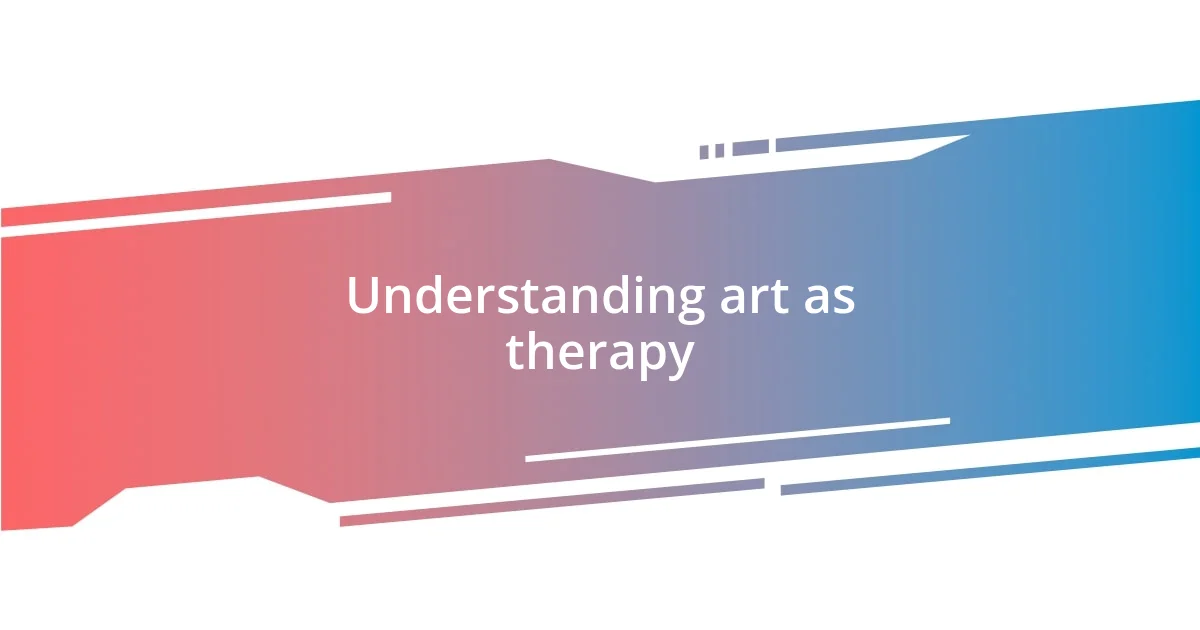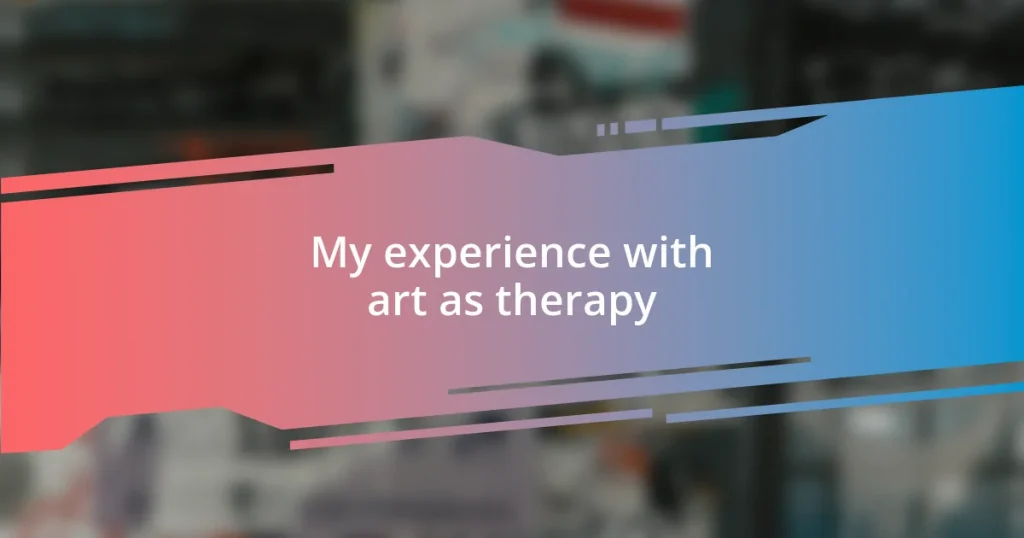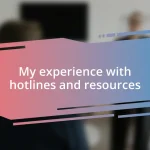Key takeaways:
- Art therapy serves as a powerful outlet for emotional expression, helping individuals process complex feelings through creative activities.
- Engaging in art not only supports personal growth and self-awareness but also fosters community connections and shared experiences among participants.
- Various techniques, such as guided imagery and collage-making, enhance the therapeutic benefits of art by facilitating relaxation, storytelling, and collaborative creativity.

Understanding art as therapy
Art as therapy is a fascinating concept that resonates deeply with many people, myself included. When I first tried painting as a form of self-expression during a particularly stressful phase in my life, I discovered just how liberating it can be. It wasn’t merely about creating something visually appealing; it was a way to process emotions that felt overwhelming at the time. Have you ever found yourself lost in a project, your worries fading into the background? That’s the essence of art as therapy—it offers a sanctuary for the mind.
Through my experiences, I’ve come to understand that engaging in creative activities helps individuals connect with their emotions. For instance, while working on an abstract piece, I realized I was subconsciously channeling feelings of joy and sadness. It was as if the colors and textures on the canvas began to tell my story. I wonder how many of us have hidden narratives waiting to be expressed? Art allows that unspoken dialogue to come forth, making it easier to articulate what might feel too complex to say.
Moreover, the therapeutic power of art extends beyond just personal exploration; it’s a valuable tool for community building. Joining an art class not only introduced me to new techniques but also to a support network of like-minded individuals. Sharing our creations and stories fostered connections that were both enriching and uplifting. Could it be that through our shared experiences in art, we find a sense of belonging?

Benefits of art therapy
Art therapy offers a myriad of benefits that can significantly impact mental and emotional well-being. From my perspective, one of the most profound advantages is the ability to reduce anxiety and stress. I remember a workshop where we focused on clay modeling for a couple of hours. As I molded the clay, I felt my worries dissipate, replaced by a comforting sense of calm. The tactile nature of creating with my hands made all the difference—it’s as if the act itself helped ground me.
Here are some specific benefits of art therapy:
– Emotional expression: It provides an outlet for feelings that might be hard to verbalize.
– Increased self-awareness: Art acts as a mirror, reflecting our thoughts and emotions back to us.
– Enhanced problem-solving: Engaging in creative processes encourages innovative thinking and perspective shifts.
– Empowerment: Completing an art project fosters a sense of accomplishment and boosts self-esteem.
– Community connection: Collaborative art projects can strengthen bonds with others, creating a sense of belonging and shared experience.
These elements, I’ve noticed, contribute significantly to personal growth, making art therapy not just a pastime, but a transformative journey.

Techniques used in art therapy
Engaging in art therapy encompasses a variety of techniques that cater to diverse emotional needs. One technique that resonates with me is guided imagery, where participants visualize a peaceful scene while creating art. I vividly recall a session where we imagined a serene landscape and then painted it. The process allowed me to channel my stress into the colors on the canvas, making the experience both calming and empowering.
Another powerful technique is collage-making, which allows for personal expression through the assembly of images. I remember crafting a collage during a particularly reflective period in my life. Each cut-out represented pieces of my journey—some joyful and some painful. This technique offered me the freedom to curate my narrative visually, and I found it incredibly cathartic to see my story unfold in front of me.
Lastly, group art therapy sessions can facilitate connection and understanding among participants. During a group painting activity, I was struck by how collective creativity brought us closer. Each person’s work was a window into their experiences, creating a tapestry of shared emotions. This collaboration not only nurtured empathy but also opened avenues for deeper conversations among us.
| Technique | Description |
|---|---|
| Guided Imagery | A meditation technique where individuals visualize peaceful scenes while creating art, promoting relaxation and emotional processing. |
| Collage-Making | A creative process that involves assembling images to represent personal narratives, allowing for expressive storytelling. |
| Group Art Therapy | Collaborative sessions where participants create art together, fostering connections and shared understanding of experiences. |

Overcoming challenges with art therapy
I once faced a significant challenge in addressing my anxieties, and that was when art therapy truly shone for me. I remember sitting down with a canvas and a dream of exploring the chaos inside my mind. Each brush stroke seemed to unravel a knot of tension, letting me see my emotions transform into something tangible. Isn’t it fascinating how the colors we choose can reflect our inner turmoil?
There was a moment when I hit a wall, unsure of how to express my feelings after a difficult week. Instead of trying to articulate it, I reached for pastels and began swirling them on paper. The process felt liberating; I realized that art allowed me to bypass my mental blocks and speak a language far deeper than words. This experience left me pondering—what if everyone could find such an outlet?
During a particularly poignant group session, we worked on a mural together, each adding our own elements to represent shared struggles. It was enlightening to witness how our diverse backgrounds intertwined, revealing a collective narrative. I was surprised by how the act of creating something meaningful together helped me understand not only my pain but also the resilience of those around me. It made me wonder, can art be the bridge that connects us through our challenges?















